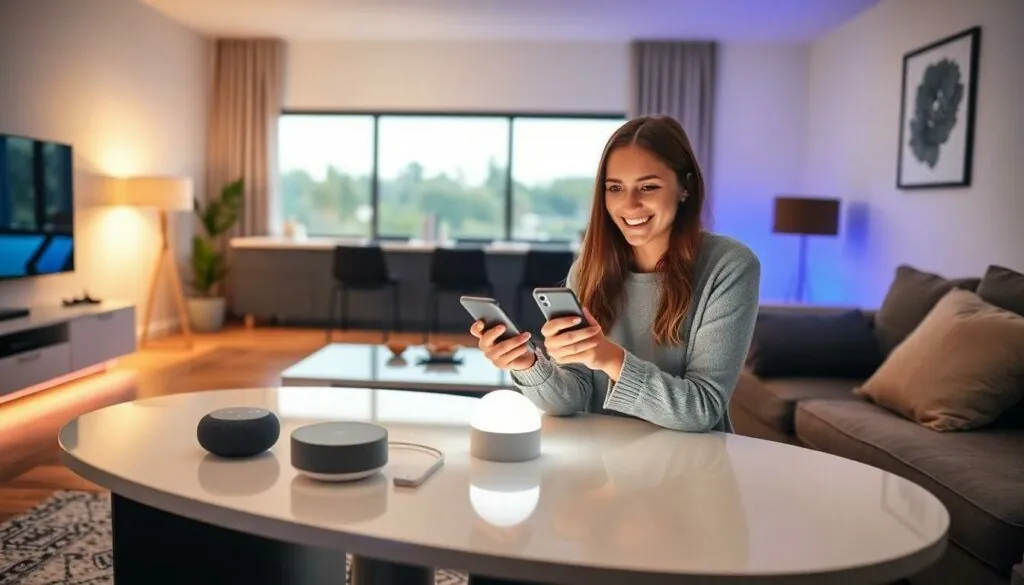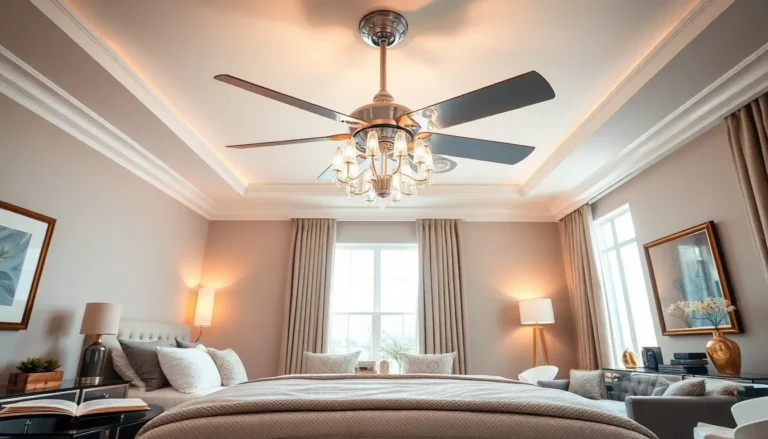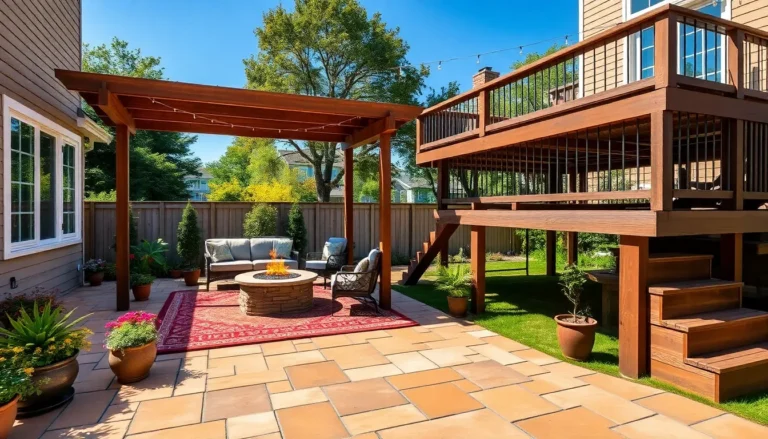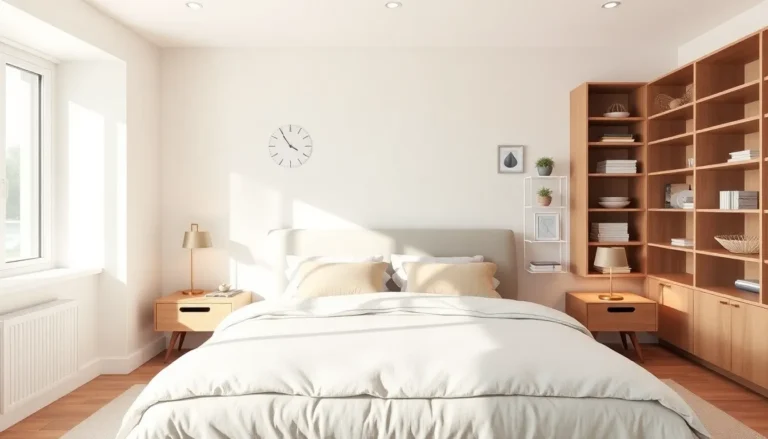Table of Contents
ToggleImagine waking up to the smell of freshly brewed coffee, the curtains gently drawing back to let the sun in, all without lifting a finger. Welcome to the world of smart home design, where convenience meets creativity and technology transforms everyday living into a futuristic experience. It’s not just about gadgets; it’s about creating a home that works for you, even when you’re still in bed.
With the rise of smart devices, homeowners can now control everything from lighting and security to temperature and entertainment with a simple voice command or a tap on their smartphone. But don’t worry; this isn’t just for tech wizards. Smart home design is for anyone who wants to live smarter, not harder. So why not turn your home into a high-tech haven that’s as stylish as it is functional? Let’s dive into the essentials of creating a smart home that’ll have your friends green with envy.
Overview of Smart Home Design
Smart home design integrates technology seamlessly into daily life, enhancing convenience and style. Homeowners can manage lighting, security, and heating systems with a few taps on their smartphones or through voice commands. This technology provides not only increased comfort but also energy efficiency by allowing users to monitor usage in real time.
Homes equipped with smart devices create environments that adapt to personal preferences. For instance, smart thermostats can learn daily routines and adjust temperatures accordingly. Security systems with smart cameras can alert homeowners to unusual activity when they’re away.
Many often perceive smart home technology as complex, but products range from simple to sophisticated, making it accessible for everyone. Smart bulbs, plugs, and smart speakers represent entry points for those new to the technology. As they gain confidence, people often explore more advanced systems like automated blinds or integrated smart home hubs.
Design aesthetics play a crucial role in smart home implementation. Homeowners can opt for sleek devices that blend with existing décor, ensuring style isn’t sacrificed for function. Furthermore, customizable interfaces allow personalization to match individual tastes.
The future of smart home design continues to evolve, with new innovations emerging regularly. Homeowners increasingly seek out solutions that enhance their lifestyle while providing peace of mind. Emphasizing usability and compatibility, today’s smart home products cater to various lifestyles and preferences, ensuring practical applications for all.
Key Components of Smart Home Design
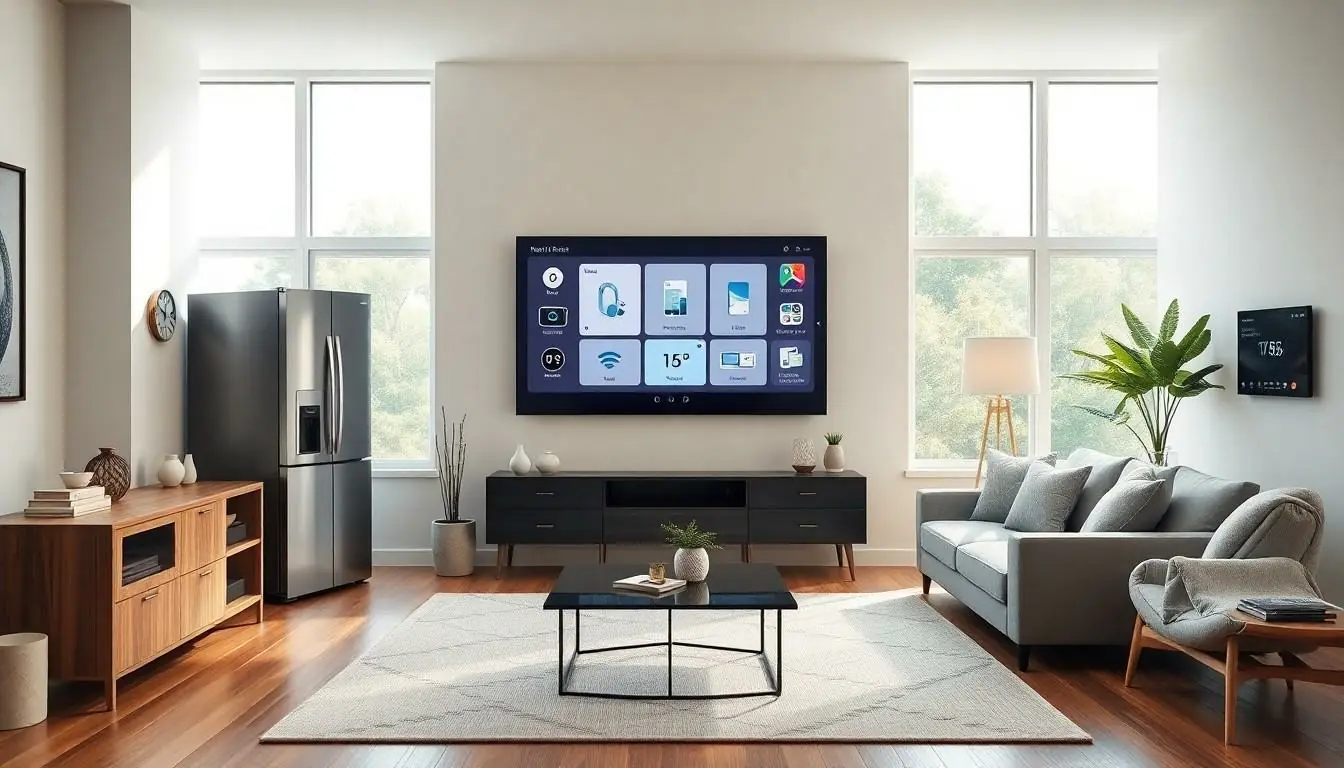
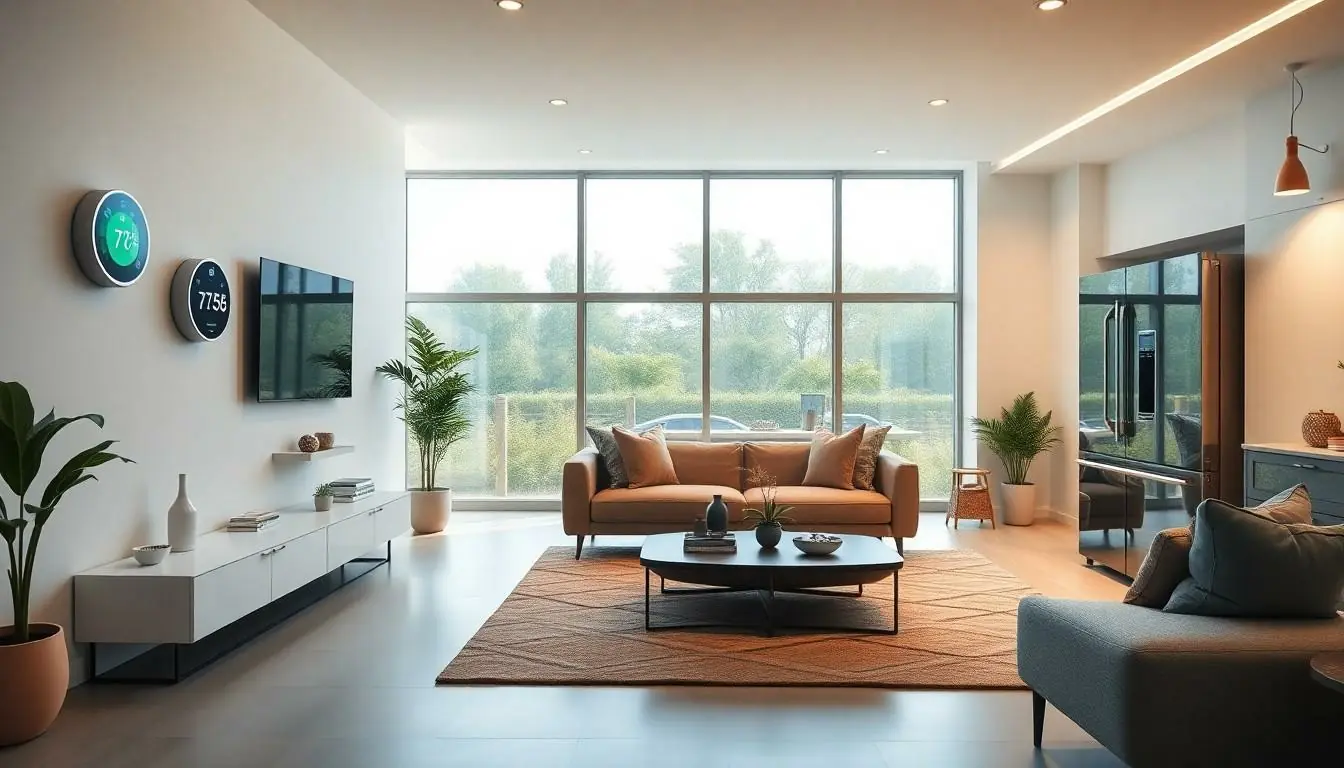
Smart home design incorporates various elements to enhance functionality and style. Key components include home automation systems, smart appliances, and energy management solutions.
Home Automation Systems
Home automation systems connect different devices throughout a residence. These systems enable users to control lighting, security cameras, and thermostats from a single app or voice command. Many popular platforms support integration with multiple brands, making upgrades seamless. Features like schedules and smart triggers enhance convenience by automating routine activities. Integration of sensors with these systems increases efficiency, ensuring a responsive living environment.
Smart Appliances
Smart appliances revolutionize daily tasks by incorporating advanced technology into household items. Refrigerators can monitor expiration dates, while ovens allow remote preheating through smartphone connectivity. Many smart appliances adapt to user schedules, saving time and simplifying meal preparation. Energy-efficient models contribute to sustainability, as they often optimize usage to minimize waste. Homeowners experience enhanced convenience and organization with these innovative devices.
Energy Management Solutions
Energy management solutions provide tools for optimizing energy usage. Smart thermostats adjust heating and cooling based on occupancy, significantly reducing energy costs. Energy monitoring systems track consumption patterns, helping homeowners identify which appliances use the most power. Automated lighting systems dim based on natural light levels, promoting efficient energy use. These solutions increase environmental awareness while providing significant cost savings.
Benefits of Smart Home Design
Smart home design offers several advantages that enrich everyday living. Homeowners gain access to innovative features that improve their lifestyle.
Enhanced Security Features
Smart technology increases home security significantly. Security cameras and smart locks enable real-time monitoring and remote access. Alerts notify homeowners of suspicious activity, allowing for immediate action from anywhere. Integration with other smart devices enhances security responses. For example, lights can automatically turn on when the door is unlocked, deterring potential intruders. Additionally, many systems store video footage in the cloud, providing peace of mind even when away from home.
Improved Energy Efficiency
Energy efficiency improves through smart home technology. Smart thermostats, for instance, adjust temperature settings based on occupancy, lowering energy consumption. Homeowners save on utility bills since these systems provide insights into energy usage patterns. Scheduling features allow devices to operate during off-peak hours, further reducing costs. Solar energy solutions can also integrate seamlessly, maximizing renewable energy usage. Overall, these technologies promote a sustainable and cost-effective lifestyle.
Increased Convenience and Comfort
Convenience transforms daily routines with smart home design. Homeowners control lighting, temperature, and appliances with simple voice commands or apps. Automated settings adapt to personal preferences, creating an optimal living environment. For instance, smart lighting adjusts brightness automatically based on the time of day. Customizable schedules enhance comfort, making homes feel welcoming at all times. Furthermore, notifications about household functions keep homeowners informed, simplifying management of their space.
Challenges in Smart Home Design
Smart home design presents various challenges that homeowners and designers encounter. These obstacles can affect user experience and product effectiveness.
Compatibility Issues
Compatibility stands out as a significant challenge in smart home design. Devices from different manufacturers often don’t work together seamlessly. Some systems may require specific apps, hindering unified control. Connectivity problems also arise, as various protocols like Wi-Fi, Zigbee, and Z-Wave create barriers. Integration of all devices into a cohesive system demands planning and research. Homeowners may invest in devices from brands with inconsistent support, leading to frustration. Ensuring compatibility enhances efficiency and usability, making it vital for a successful smart home environment.
Privacy and Security Concerns
Privacy and security concerns pose critical challenges in the realm of smart home design. Personal data collected by smart devices can become vulnerable if not protected adequately. Hackers increasingly target unsecured networks, risking unauthorized access. Data breaches can lead to identity theft or misuse of personal information. Awareness of these risks drives the necessity for robust security measures, such as encryption and two-factor authentication. Homeowners should select devices with strong security features to safeguard their information. Prioritizing privacy enhances user trust and promotes a safe smart home experience.
Future Trends in Smart Home Design
The future of smart home design evolves rapidly, driven by technological advancements and consumer preferences. Homeowners can expect a significant shift towards more intelligent solutions.
Integration of AI and Machine Learning
AI and machine learning transform how smart homes function. These technologies analyze user behavior, adapting in real-time to enhance convenience. For example, smart thermostats learn schedules, adjusting temperatures automatically based on habits, which maximizes comfort and energy efficiency. Similarly, security systems utilize facial recognition to distinguish between family members and strangers, offering personalized protection. Machine learning also continuously improves smart appliances, ensuring they operate optimally according to specific routines.
Sustainability and Eco-Friendly Solutions
Sustainability gains prominence in smart home design, with eco-friendly solutions influencing consumer choices. Smart devices enhance energy management through data-driven insights, allowing homeowners to reduce carbon footprints. Smart lighting systems, for instance, adjust brightness based on natural light, promoting efficient energy use. Additionally, smart irrigation systems monitor soil moisture levels, preventing water waste in gardens. These innovations not only foster environmental responsibility but also lead to financial savings on energy bills, appealing to eco-conscious consumers.
Embracing smart home design can transform living spaces into more efficient and enjoyable environments. By integrating technology into daily routines homeowners can experience enhanced convenience and improved energy management. The seamless connectivity of smart devices not only boosts comfort but also promotes sustainable living.
As technology continues to evolve homeowners have the opportunity to stay ahead of trends while customizing their spaces to fit personal lifestyles. With a wide range of options available even those with minimal tech experience can create smart homes that reflect their tastes and needs. Ultimately smart home design represents a significant step towards a more connected and efficient future.

